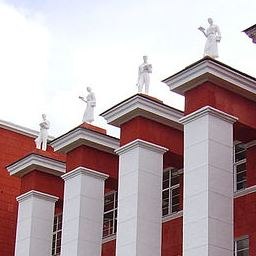Nizhniy Novgorod—As we have seen in recent news, there are great challenges concerning migration, integration, and violence in Russia today. This has become noticeable even in quiet Nizhniy Novgorod, where there is a growing conflict between two leaders of the Muslim community: one group supported predominantly by local Tatars, another by growing numbers of immigrants from Central Asia and the Caucasus.
For the past three years, the State University of Nizhniy Novgorod has run a project called “Ethnic and religious diversity in the context of Muslim educational programs: Russian and foreign experiences.” The main purpose of the project is to facilitate cooperation among religious leaders, institutions, teachers, professors, NGOs, and bureaucrats, and to have them all work to close the gaps in ethnically and religiously divorced communities. While Russia is looking for its own way to deal with Muslim minorities and immigrants, the project also relates foreign experiences in creating more tolerant environments.
Muslim minorities in Russia are often viewed as either entirely extremist or fully integrated. Those two positions are equally wrong; the reality is somewhere in between. Still, there is some evidence that radicalism in Russian cities arrives with immigrants. Related to this, there are three regions of particular concern: Crimea, Central Asia (mainly Uzbekistan), and the South Caucasus. Traditionally, experts pay more attention to the situation in Central Asia, so here let me briefly elaborate on the other two.
Regarding the Crimea, since Ukrainian independence in 1991, about 260,000 former deportees and their descendants moved back to the region from Central Asia (Crimean Tatars were forcibly expelled by Stalin). The Ukrainian government pledged the returnees land, financial help, and the return of mosques, but large socio-economic problems, particularly unemployment, plague the region. Among the younger men, there is a smoldering anger that has often been barely controlled by their elders. Many new Muslim missionaries in that region are reportedly preaching a stricter form of Islam than the more liberal versions that were traditionally practiced by the Crimean Tatars. Russian television widely covered the story of a meeting organized by Hizb ut-Tahrir in Simferopol on 7-8 October 2013. Ukrainian authorities do not prohibit the activity of this organization, say local experts.
Another area of interest is the South Caucasus. Some hold that the primary obstacle to reducing tensions is that minorities across the region have a limited representation in local governmental institutions. Concerns have been expressed that in Georgia human rights problems have been overlooked, including some that help create the conditions for radicalization of local Muslims. Azerbaijan is a source of even greater concern. There are worries that Iran is using home-grown Shia Islamists to undermine the secular nature of Azerbaijan. There is also concern about the growing influence of Salafi groups in the North Caucasus.
The best way to decrease extremism? Certainly not poorly designed and inadequately executed responses by local governments and the international community. Diversity workshops at major universities can be a helpful step in the right direction.











